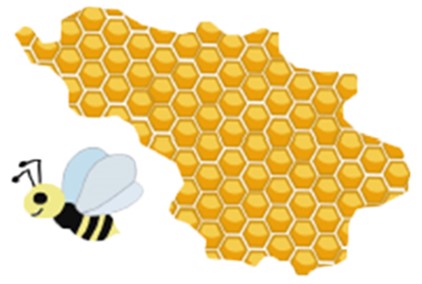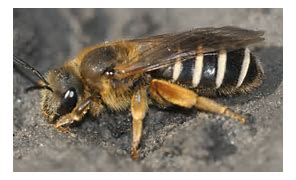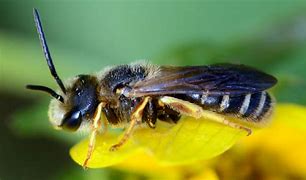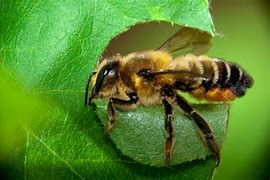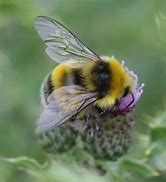
Solitary and Communal Bees
Solitary and Communal Bees
To learn about Solitary and Communal Bee, hole-nesting bees, we first need to learn how most bees actually live. Social bees like the honey bee are actually the exception, and not the rule, for bee behavior. About 90% of bee species are solitary, meaning they don’t live in a colony, build hives, make honey, or swarm. Large groups of solitary bee nests are called aggregations, to distinguish them from colonies. In some species, multiple females share a common nest, but each makes and provisions her own cells independently. This type of group is called "communal" and is not uncommon. The primary advantage appears to be that a nest entrance is easier to defend from predators and parasites when there are multiple females using that same entrance on a regular basis
In solitary bee species, every female bee is a fertile egg-laying bee and she must work alone to perform all the duties to care for her young. The lifespan of most solitary bees is only about 4-6 weeks, making solitary bees efficient pollinators who work long days. The way that solitary bees live and behave is pretty different from the well known social bees, the honey bee and the bumble bee.
- Instead of honey in honey comb, each solitary bee egg gets its own portion of pollen and nectar.
- Most solitary bees hibernate over the fall and winter inside of cocoons.
Solitary bees are gentle bees because they do not have a hive and stores of honey to defend. A rare sting from a solitary bee hurts less because they lack the venom that honey bees, wasps, and hornets have.
- Solitary bees only sting as a last resort you if you handle them roughly or pose a threat to them. Being loners, solitary bees fly around by themselves and do not attack in swarms or groups like some other types of bees.
- Male bees of any bee species do not have stingers.
To learn more about "Bees", Read “Bee Bytes: Do All Bees Sting?"
What is a Bee?

There are more than 20,000 species of bees as well as thousands more wasp-like and fly-like bees. Adults range in size from about 2 mm to 4 cm (about 0.08–1.6 inches) in the world. There are over 4,000 bees in North America, and 400 native bees in Maryland.“
Social bees, such as the honey bee and bumble bee (see the difference) live in a nest/hive with a queen and multiple workers who maintain the colony. Most bumblebees are social insects that form colonies with a single queen. The colonies are smaller than those of honey bees, from 50 to a few hundred individuals in a nest whereas a honey bee may have as many as 60,000-80,000 bees.
Solitary bees typically do not produce honey nor beeswax. Solitary bees are important pollinators. They gather pollen to feed their brood. Often it is mixed with nectar to form a paste-like consistency, similar to that of honeybees.
The most common solitary bee is the Carpenter Bee. However, many more exist. Leafcutter bee, Mason Bee, Horned–face bee, sweat bees, polyester bees, squash bees, dwarf carpenter bees, alkali bees and digger bees.
Native Bees in Maryland
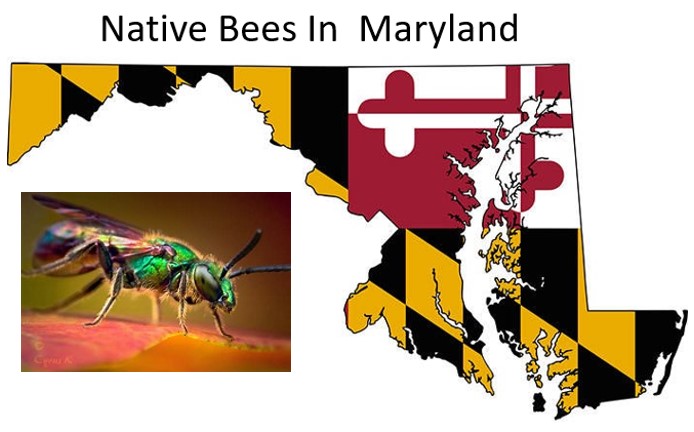
Maryland is home to around 400 different species of native bees. There are five common families of bees found in Maryland. These families include Honey Bees, Bumble Bees and allies, Sweat Bees, Miner Bees, Leaf-cutter Bees, Mason Bees and allies and Plasterer Bees.
Learn more:
Native Bees of Maryland (A power Point Presentation)
Where do Native Bees Live?

Most solitary bees nest in the ground in a variety of soil textures and conditions (see minor bees) while others create nests in hollow reeds or twigs, holes in wood (see leafcutter or carpenter bees). The female typically creates a compartment (a "cell") with an egg and some provisions for the resulting larva, then seals it off. A nest may consist of numerous cells. When the nest is in wood, usually the last (those closer to the entrance) contain eggs that will become males. The adult does not provide care for the brood once the egg is laid, and usually dies after making one or more nests. The males typically emerge first and are ready for mating when the females emerge. Solitary bees are either stingless or very unlikely to sting (only in self-defense, if ever).”
For more information, visit "Build Hotels for Wild Bees"
How to Attract Native and Solitary Bees
Attracting Solitary Bees
Native bees pollinate 80 percent of flowering plants, according to the U.S. Department of Agriculture Forest Service and the Pollinator Partnership. You can attract solitary bees by creating a pollinator-friendly garden that provides bees with food, safety and shelter.
Solitary bees frequent native and non-native plants, but they prefer natives that have adapted alongside them over the years. Locally adapted native plants attract solitary bees. Heirloom flowers tend to draw more solitary bees also. Unlike modern hybrids, often lacking in scent, old-fashioned favorites produce abundant nectar and pollen. Plant large swaths of long-blooming plants, and provide successive blooms from spring through fall so bees always have a ready source of food. Bees prefer bright blue, yellow and white flowers that have flattened blossoms to act as landing pads. Without a colony to protect, solitary bees rarely sting.
See: "Attracting Pollinators"
Solitary Bee Families in Maryland
6 Most Common Native Bee Families In Maryland
Localhost/wordpress/login
.
Where Do Solitary Bees Live?
Where do native bees live?
Most bee species nest underground where they build tunnels and nesting chambers. The rest of bee species are hole-nesting bees and most hole-nesting bees don’t cause damage to your home because they nest inside of pre-made holes.
- About 75% of bee species nest in the ground, sometimes sharing tunnel openings.
- About 25% of bee species nest in above-ground holes in dead wood and broken stems.
We can easily provide homes for hole-nesting bees, raise and harvest their cocoons and move the bees to where we need their pollination.
For additional information on identifying bees, visit TreeHugger.com
For additional information on raising native bees, visit Crown Bees.
More information on bees in the mid-Atlantic Region, visit Patuxent Wildlife Research center
Ground Dwelling Bees

Ground-nesting bees include the digger bees, sweat bees , and mining bees. Females are solitary creatures, excavating nests in dry soil.
Ground bee queens do not defend their nesting areas and are very docile and unlikely to sting, posing little or no threat to people. Like other bees, they are active foragers of nectar and pollen from flowers, making them beneficial pollinators. The males often patrol an area inhabited by females seeking mates. While the males can be very active and seem aggressive, they lack a stinger and are also harmless.
Their nest entrances are small mounds of soil a few inches across. While they may briefly detract from the aesthetics of a well-tended lawn, they do absolutely no harm to the grass or soil—even improving it as their nests function as aeration holes, improving the penetration of water and nutrients. Eventually, as the nests are abandoned after the spring nesting season, the soil washes back into place with rain.
Non-Ground Dwelling Bees

Non-Ground dwelling bees include mason, leafcutter, horn-face, carpenter bees. Many of these bees live in reeds, tube-like structures.
Items to consider: Visit Crown Bees, Build Hotels for Wild Bees, and guide Bee Nest Boxes
